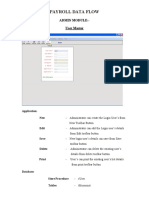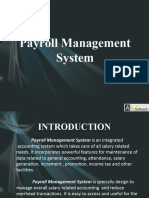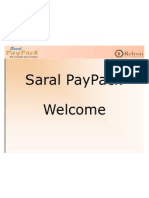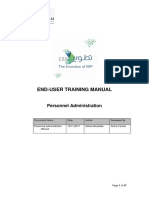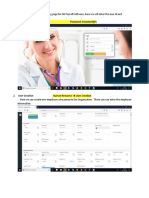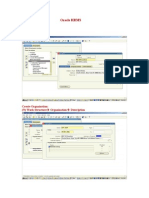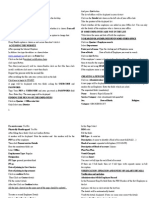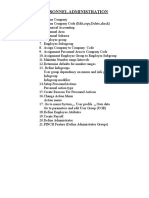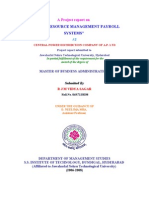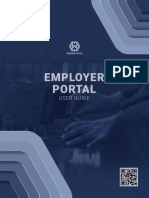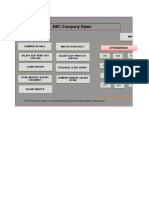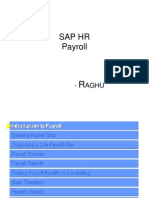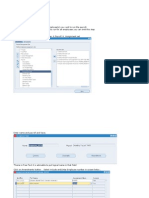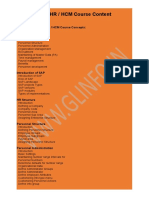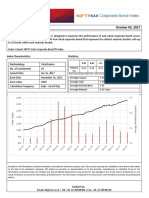0% found this document useful (0 votes)
12 views23 pagesUser Guide For Payroll
The document is a user guide for a payroll system, detailing step-by-step instructions for logging in, managing employee records, salary structures, attendance, and generating various reports. It covers the creation of employee masters, loan and advance records, salary heads, and attendance details, along with processing salaries and generating reports like employee salary, attendance, PF, and ESIC. Each step includes specific actions to be taken, required fields, and options for saving or processing data.
Uploaded by
bisinep923Copyright
© © All Rights Reserved
We take content rights seriously. If you suspect this is your content, claim it here.
Available Formats
Download as DOCX, PDF, TXT or read online on Scribd
0% found this document useful (0 votes)
12 views23 pagesUser Guide For Payroll
The document is a user guide for a payroll system, detailing step-by-step instructions for logging in, managing employee records, salary structures, attendance, and generating various reports. It covers the creation of employee masters, loan and advance records, salary heads, and attendance details, along with processing salaries and generating reports like employee salary, attendance, PF, and ESIC. Each step includes specific actions to be taken, required fields, and options for saving or processing data.
Uploaded by
bisinep923Copyright
© © All Rights Reserved
We take content rights seriously. If you suspect this is your content, claim it here.
Available Formats
Download as DOCX, PDF, TXT or read online on Scribd
/ 23

